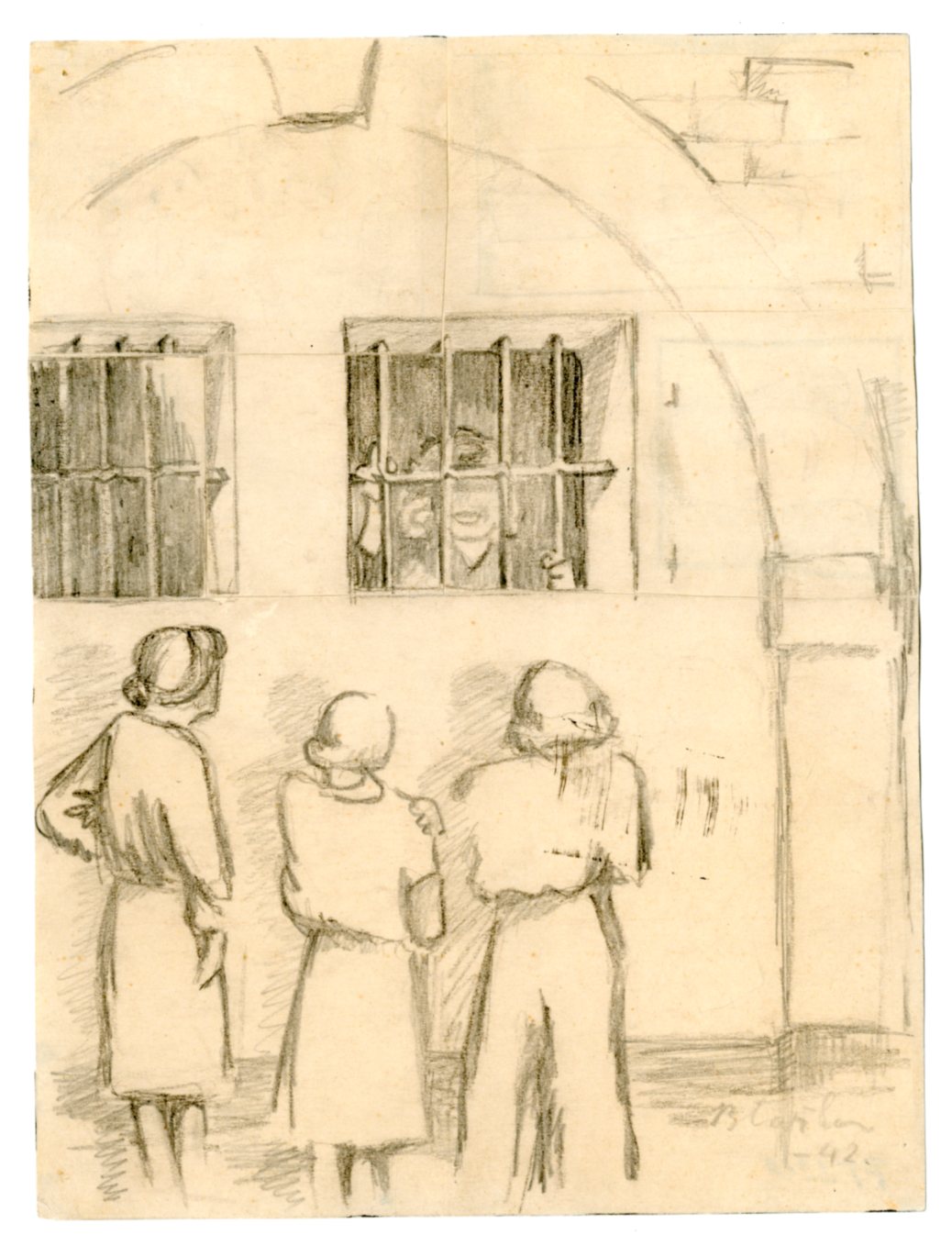
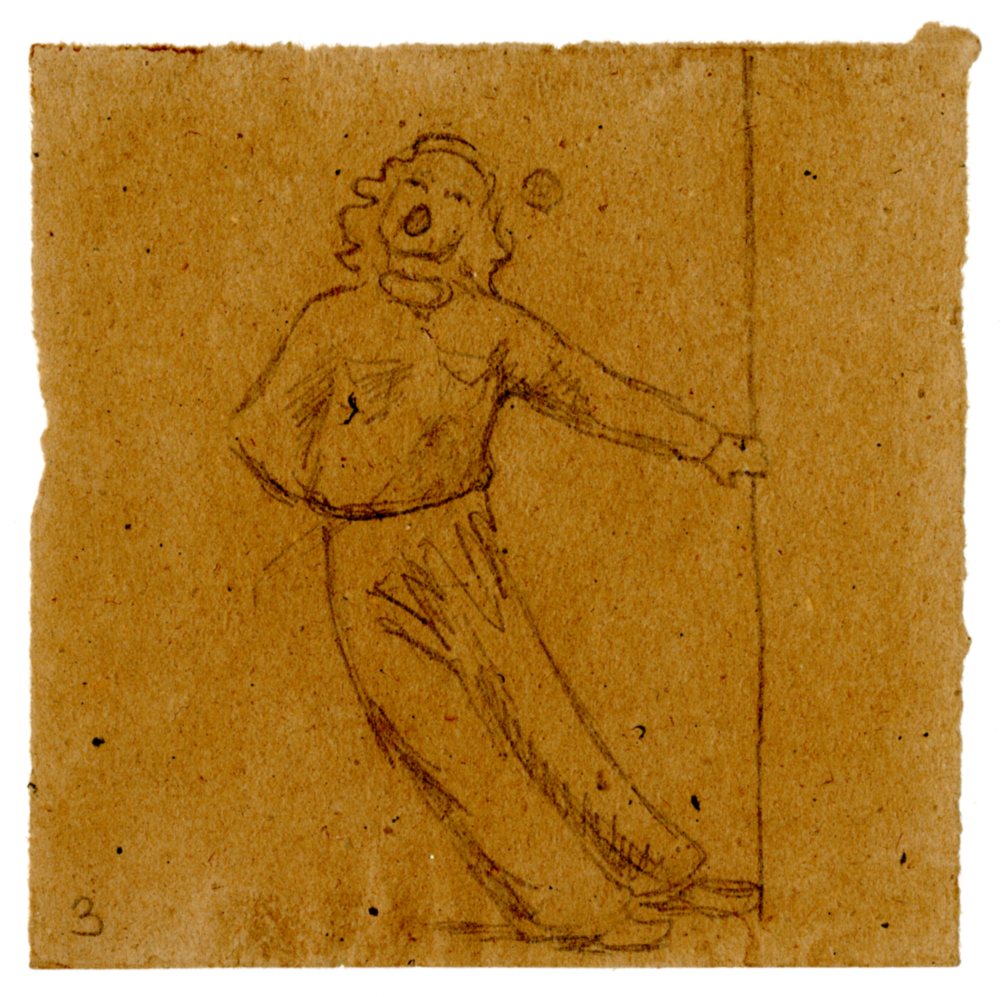
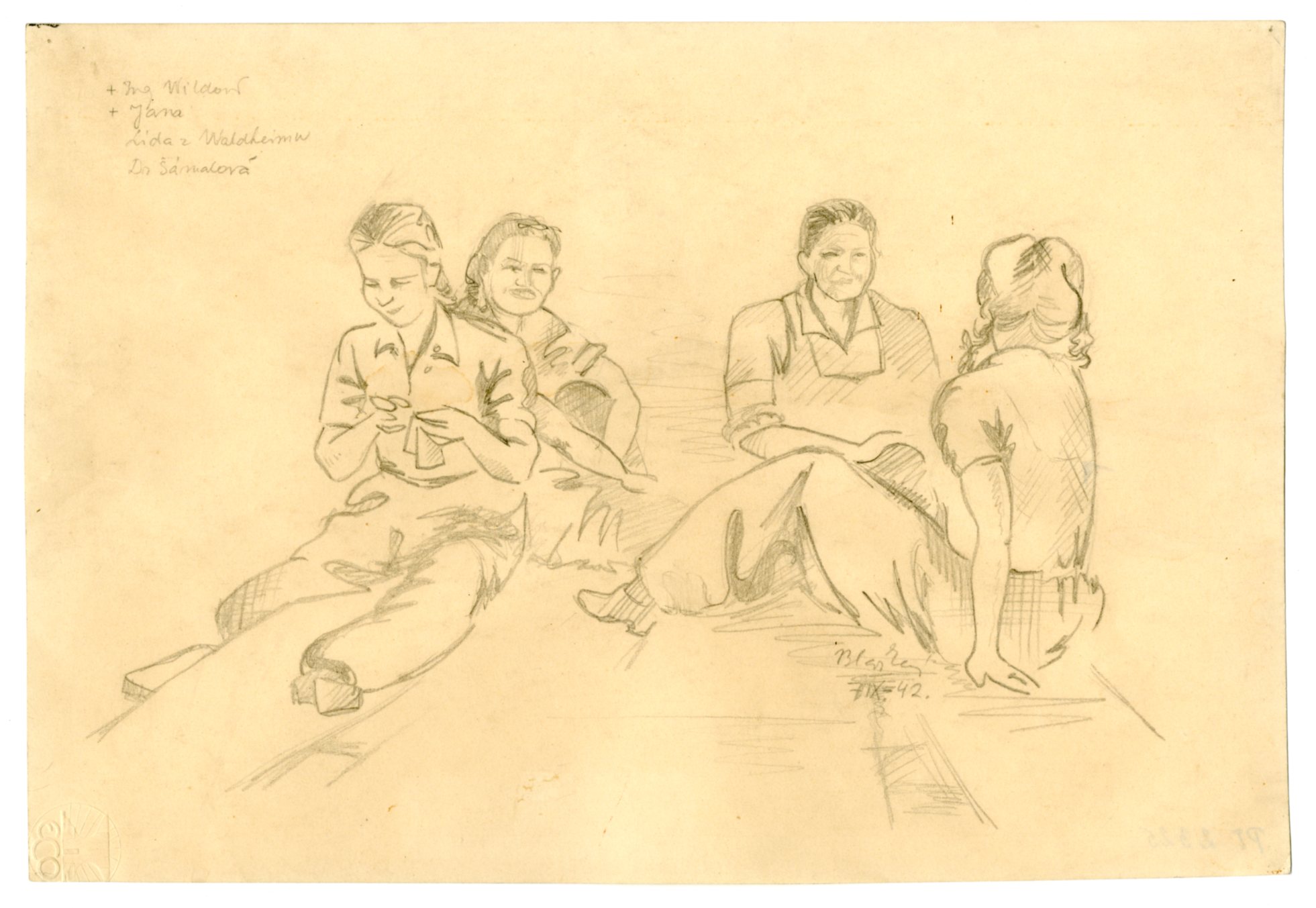
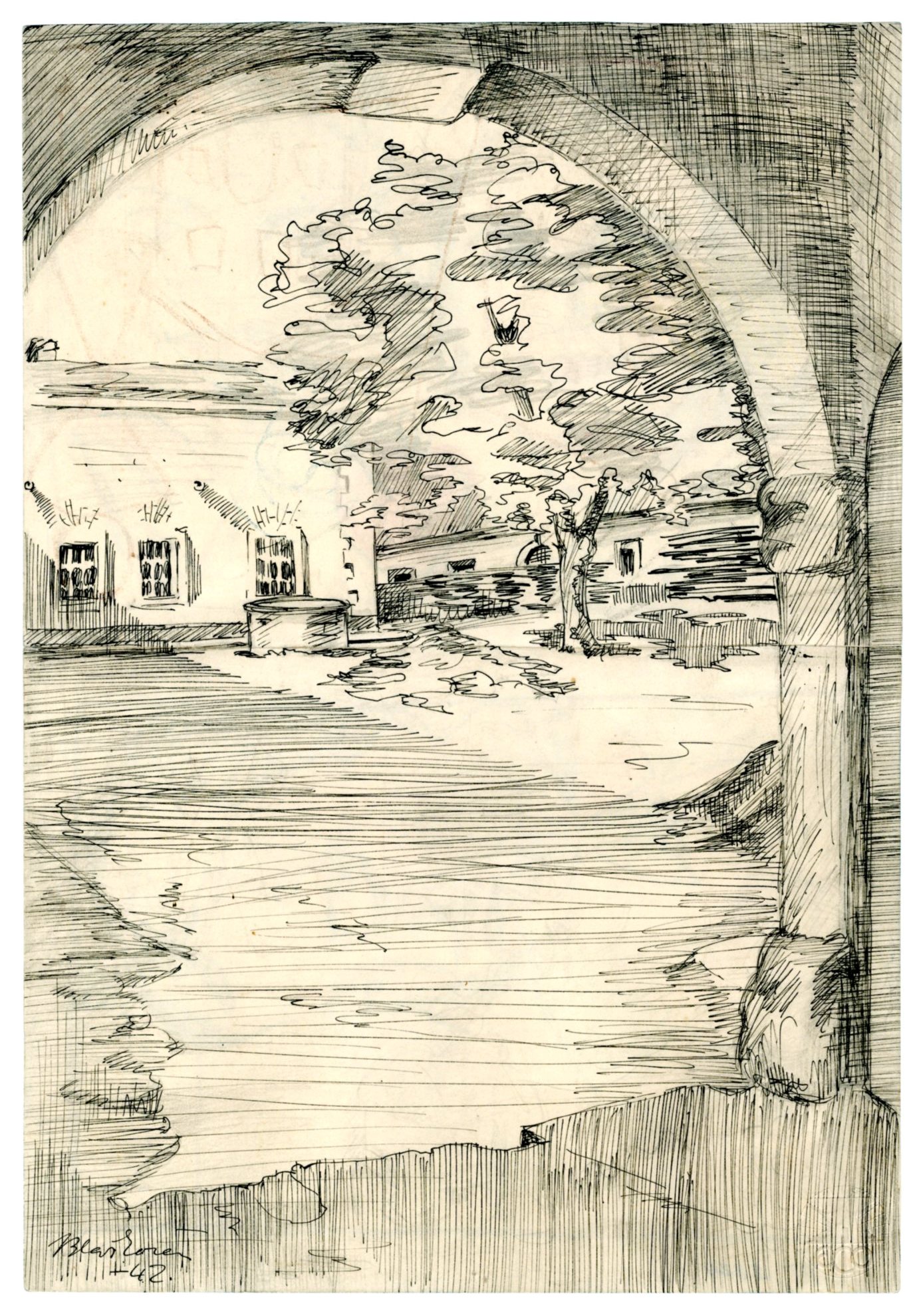
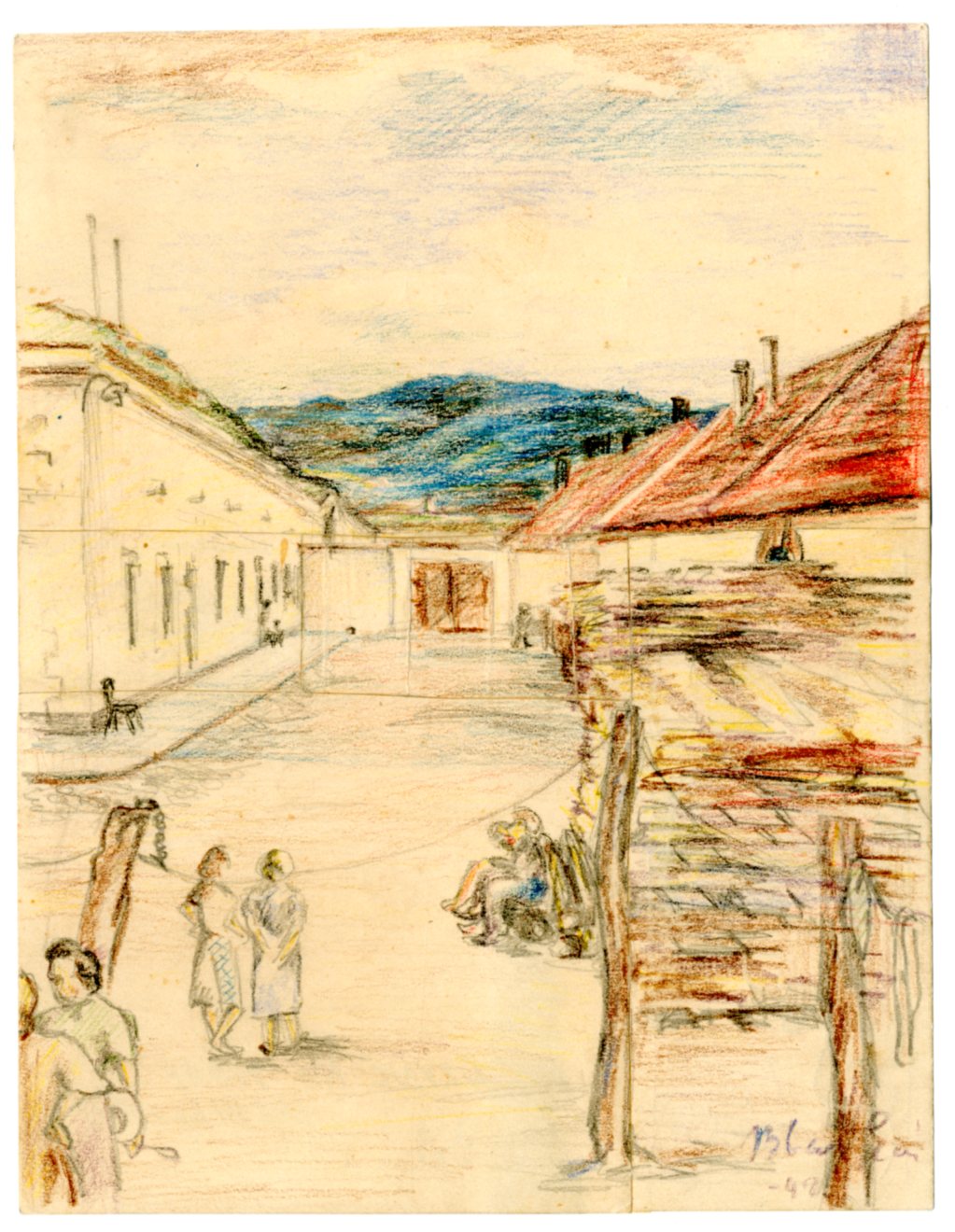
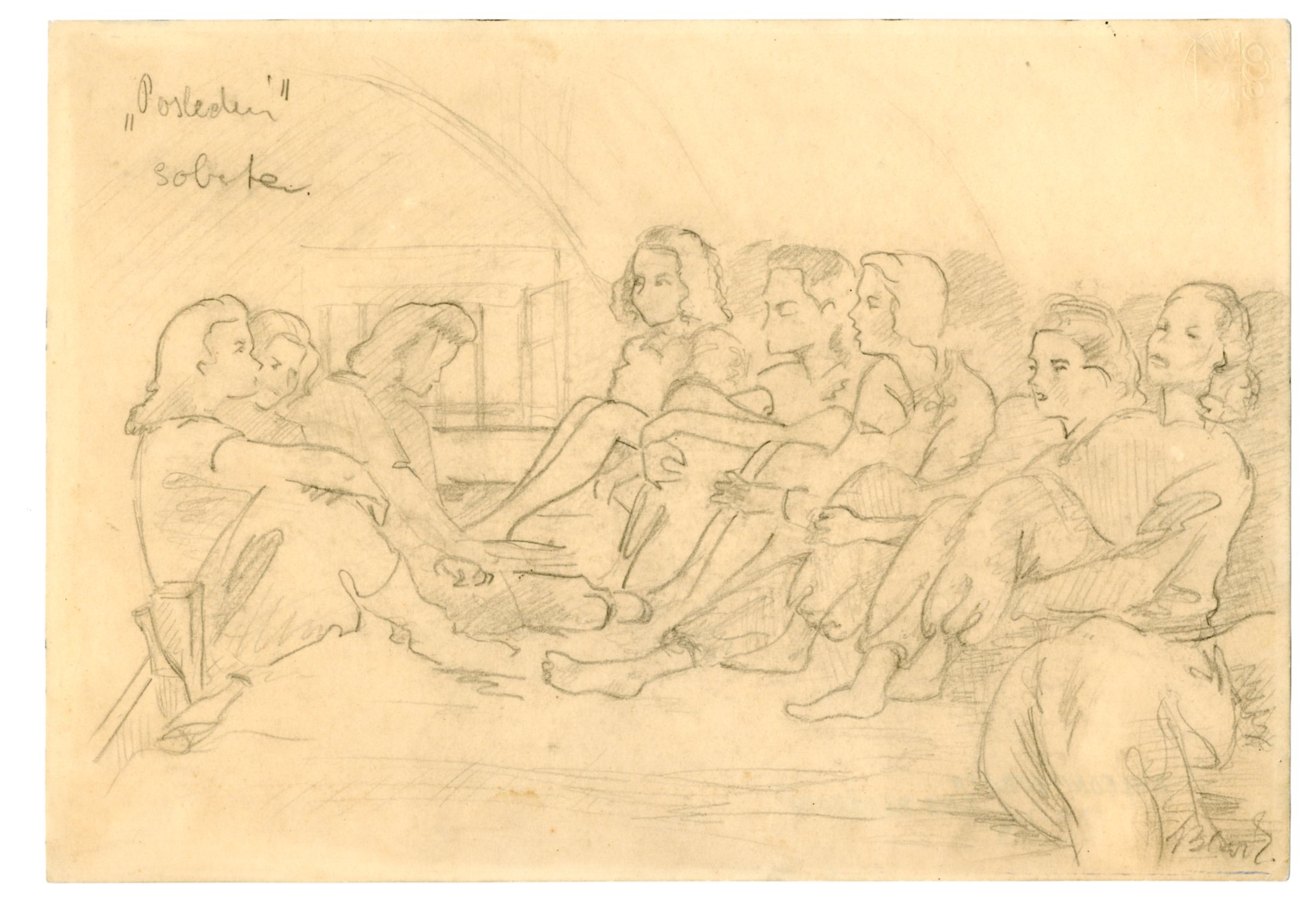
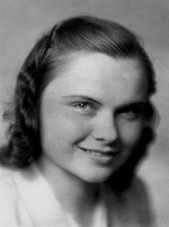
The Gestapo re-arrested her in the autumn of 1944, this time as part of the Nazi project of forced labor deployment for the Czech inhabitants. She worked as an unskilled laborer in a factory that repaired aircraft engines at Babí near Náchod, in the rubber plant Kudrnáč in Náchod, and on the construction of the Štěchovice river dam.
After the war, Ema Blažková finished her studies at the Roudnice grammar school, studied drawing and painting at the Czech Technical University in Prague, the Academy of Fine Arts and the Academy of Arts, Architecture and Design in Prague. As a graduated academic painter, she specialized primarily in landscape painting and portraits (focusing on portraiture of children). But she devoted herself to still life, genre motifs, illustrations for children, and also taught figural painting. Her frequently depicted motifs include various secluded spots in Prague, scenes from the Podřipsko region or Příbram district. She did not exhibit her paintings only in Czechoslovakia but also presented her art abroad.
Experiences of her incarceration in the Small Fortress Terezín and of the communist regime that subsequently came to power in her country affected Ema Blažková to such an extent that she developed an irrepressible aversion to totalitarianism. Her antipathy to the ruling communist regime culminated in the 1970s. She was arrested on trumped-up charges and her detention in Prague’s Ruzyně Prison resulted in an outbreak of severe mental disease, which greatly handicapped her for the rest of her life. Ema Blažková, mother of three children, died on August 31, 2003, on her 79th birthday.